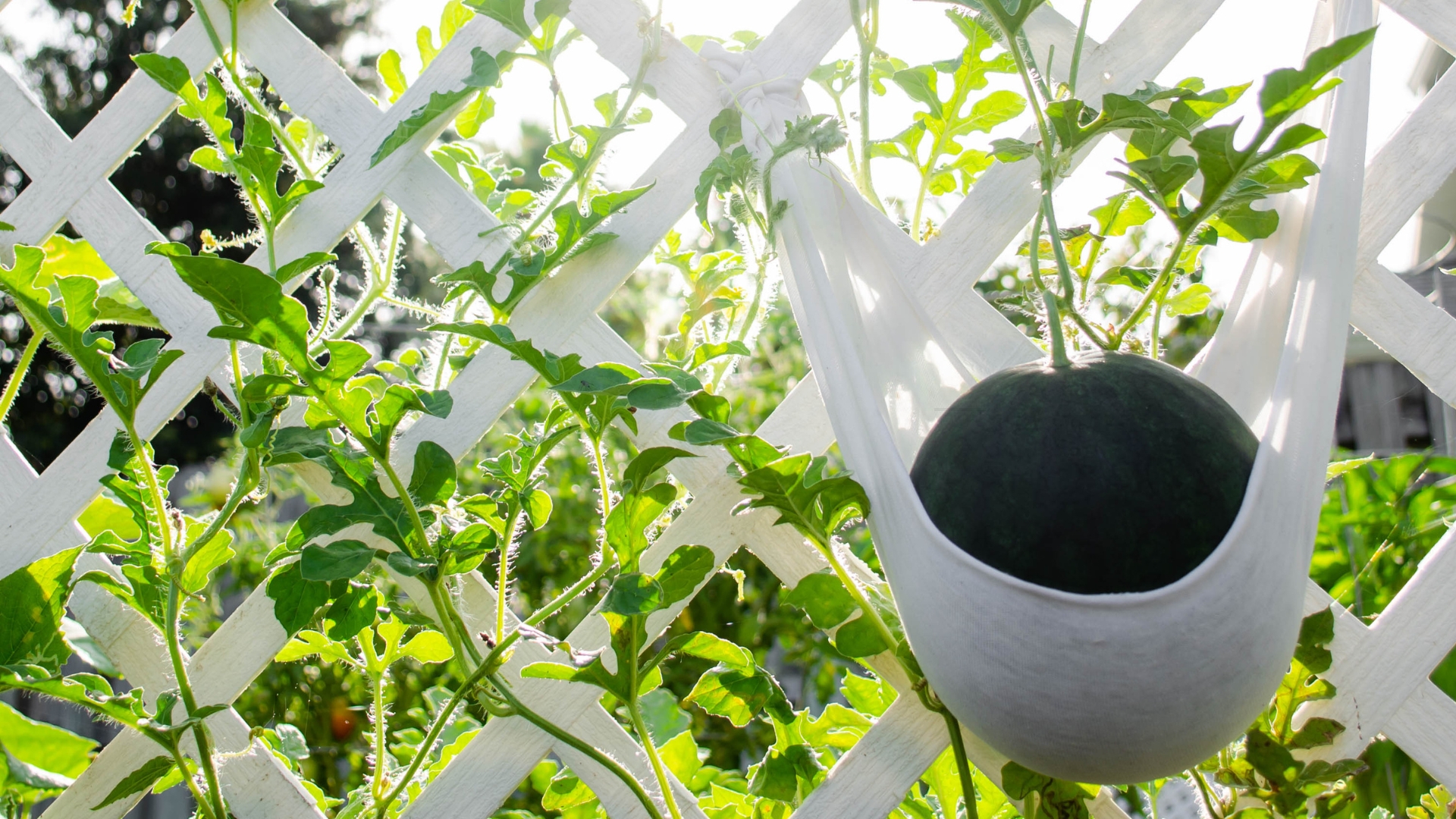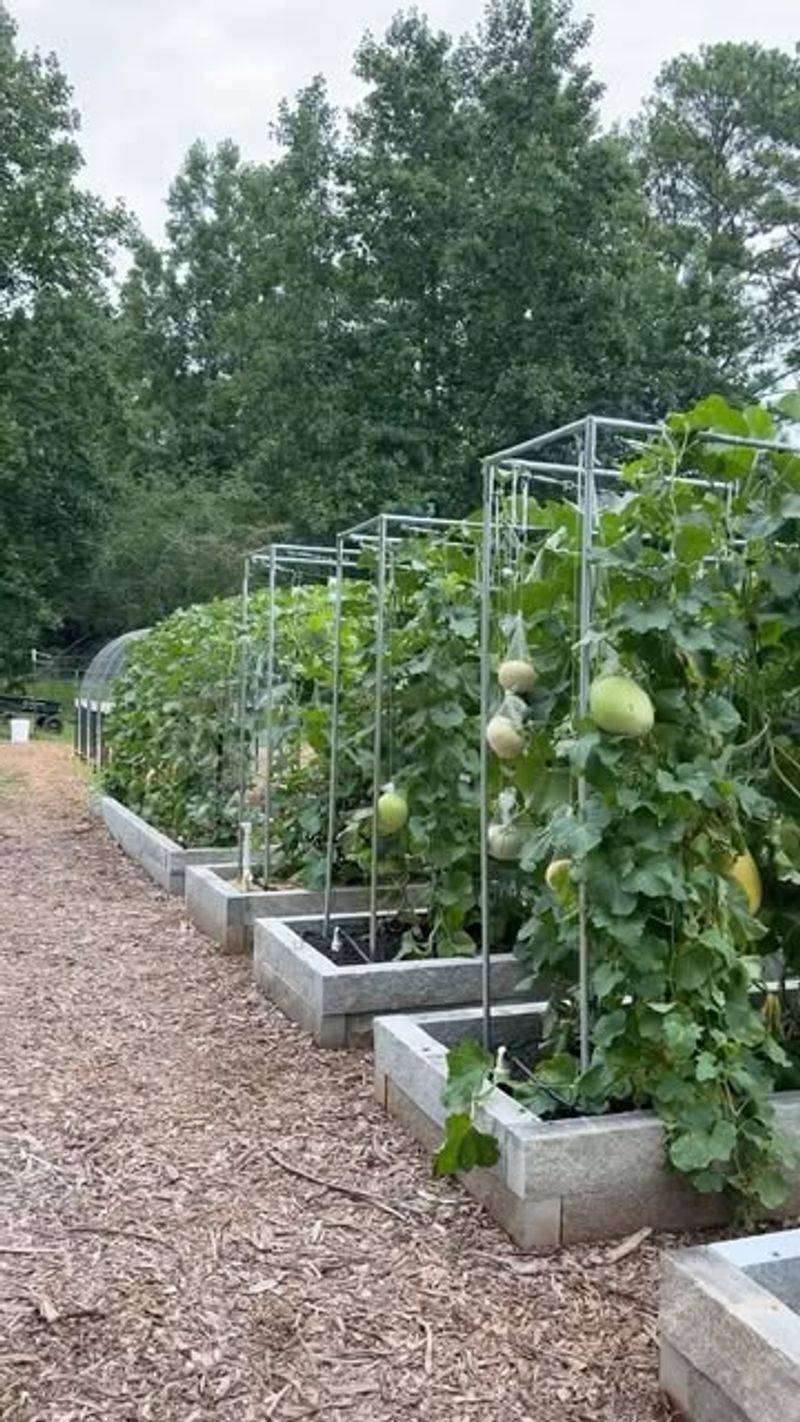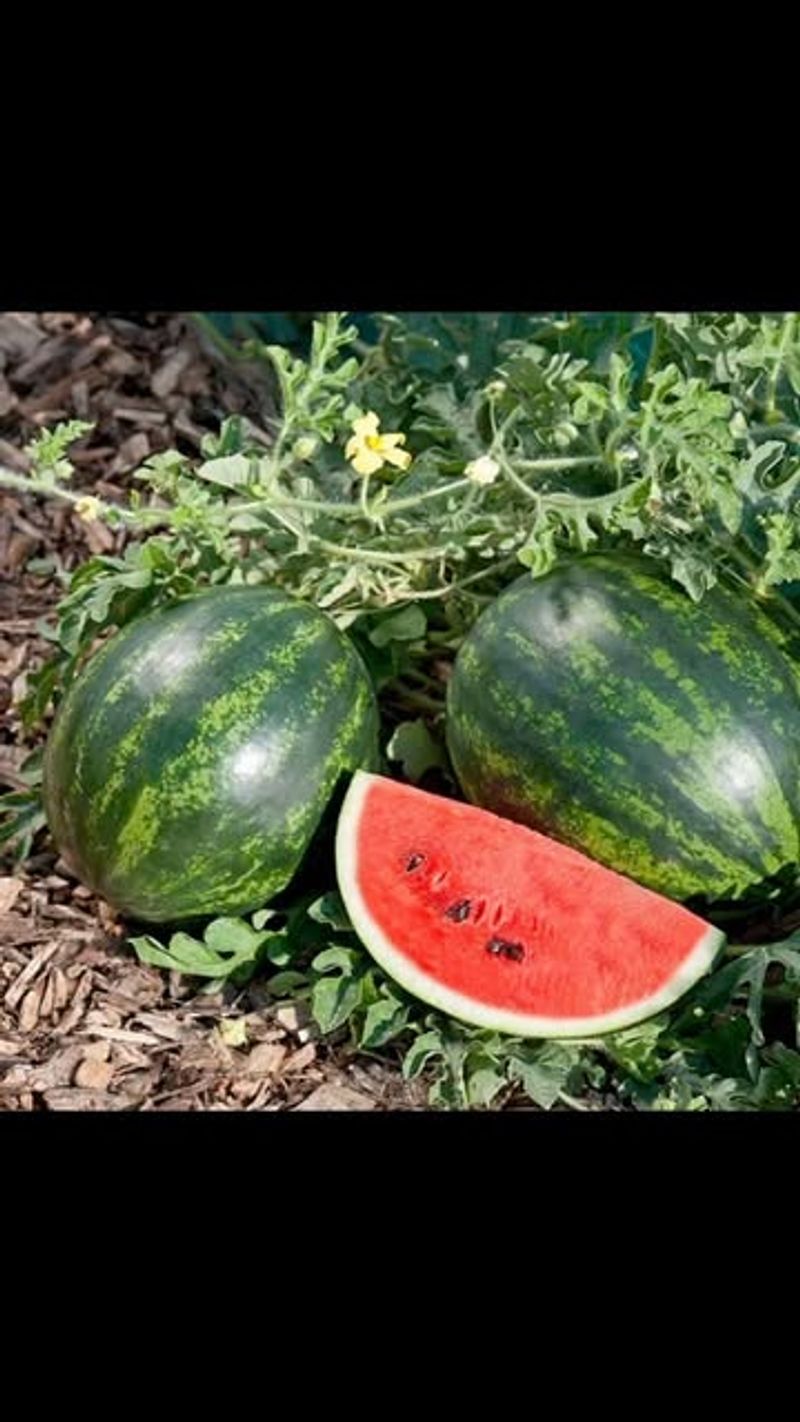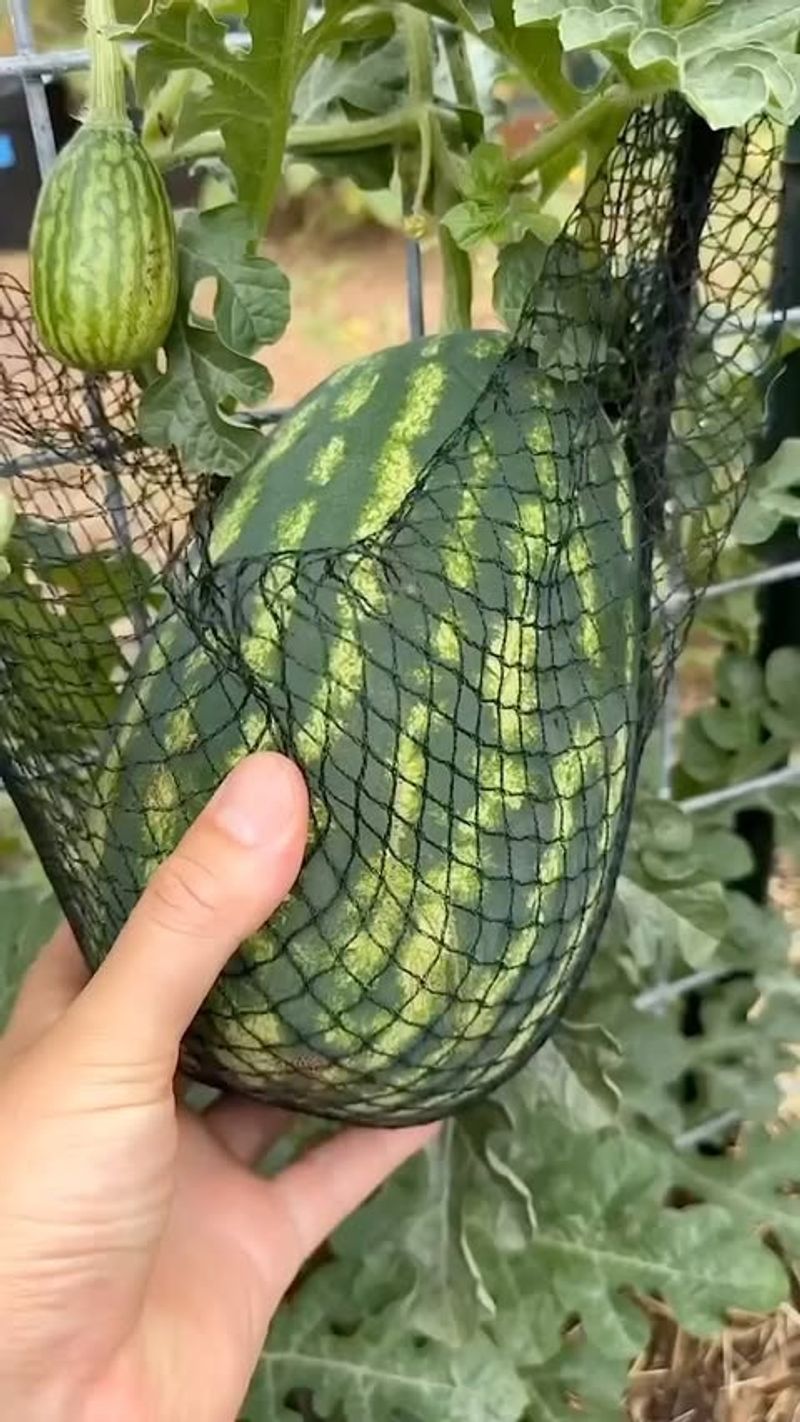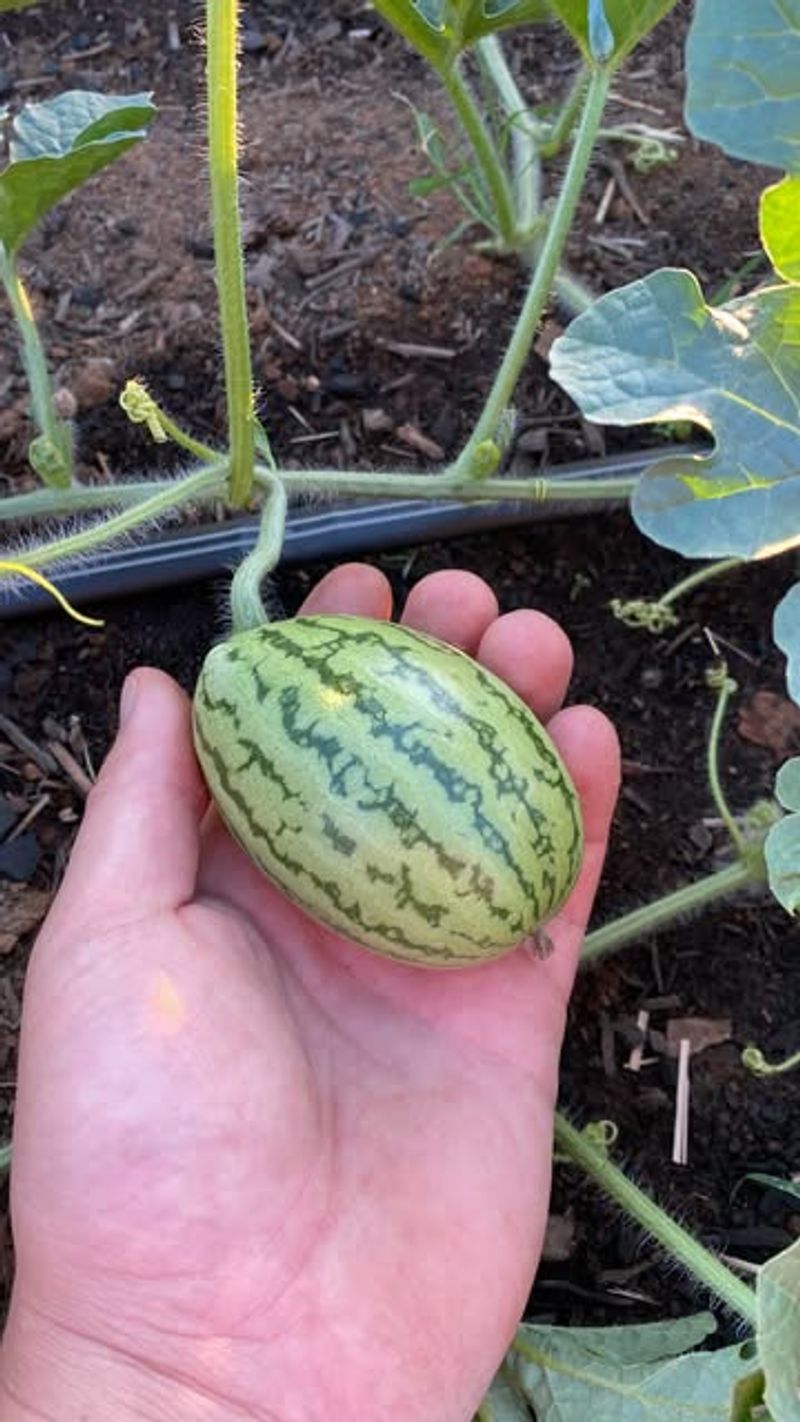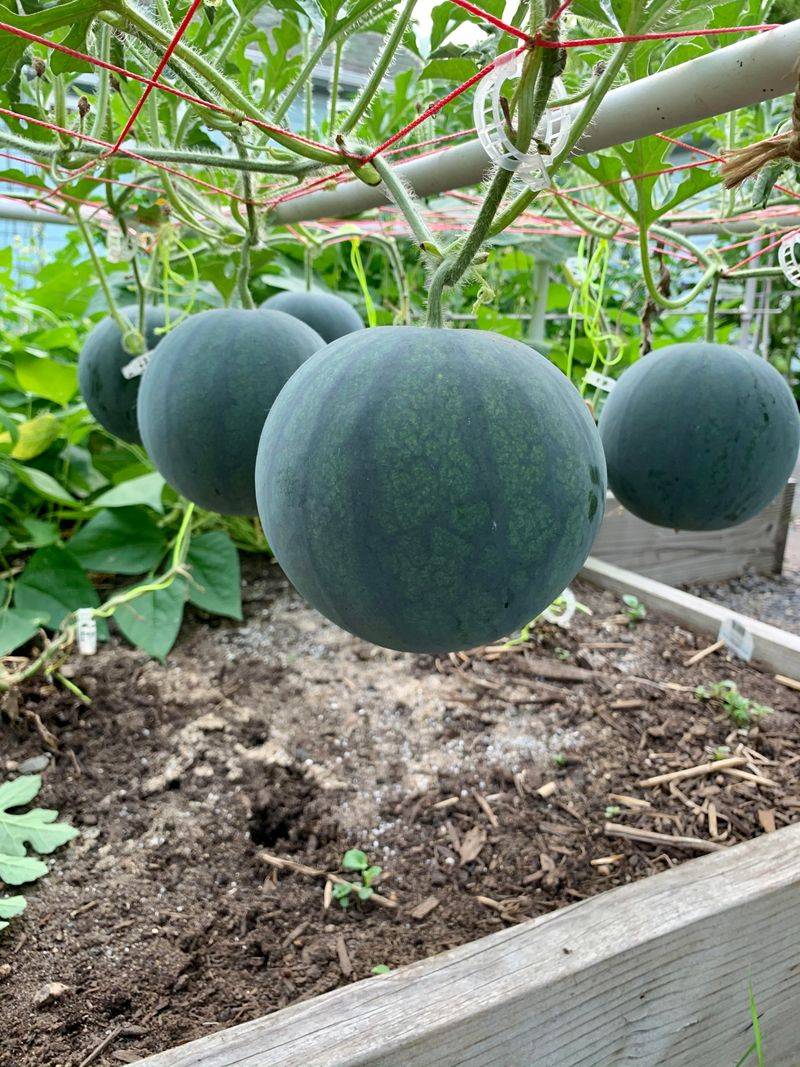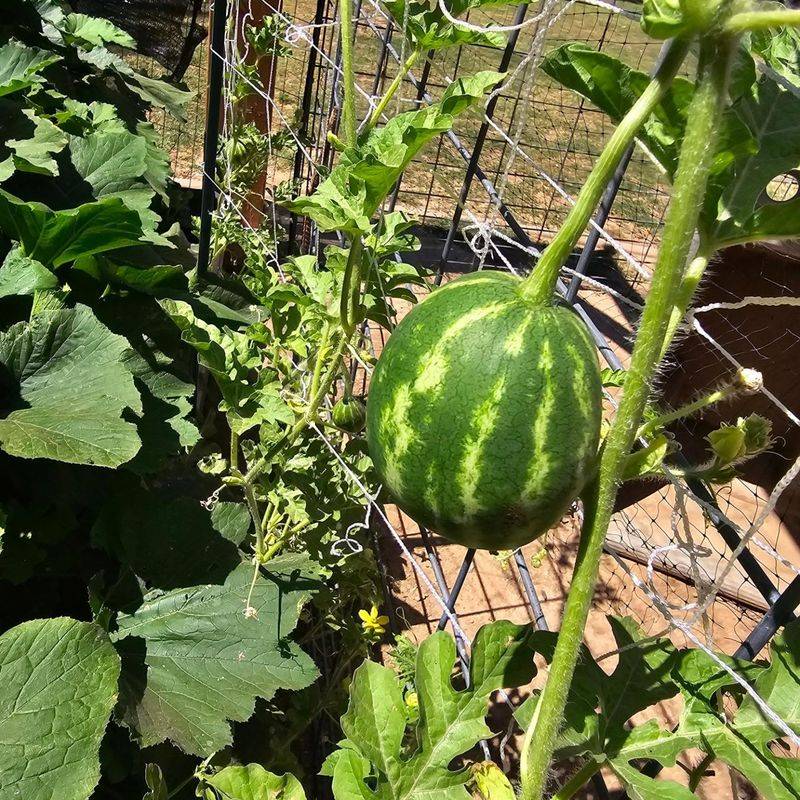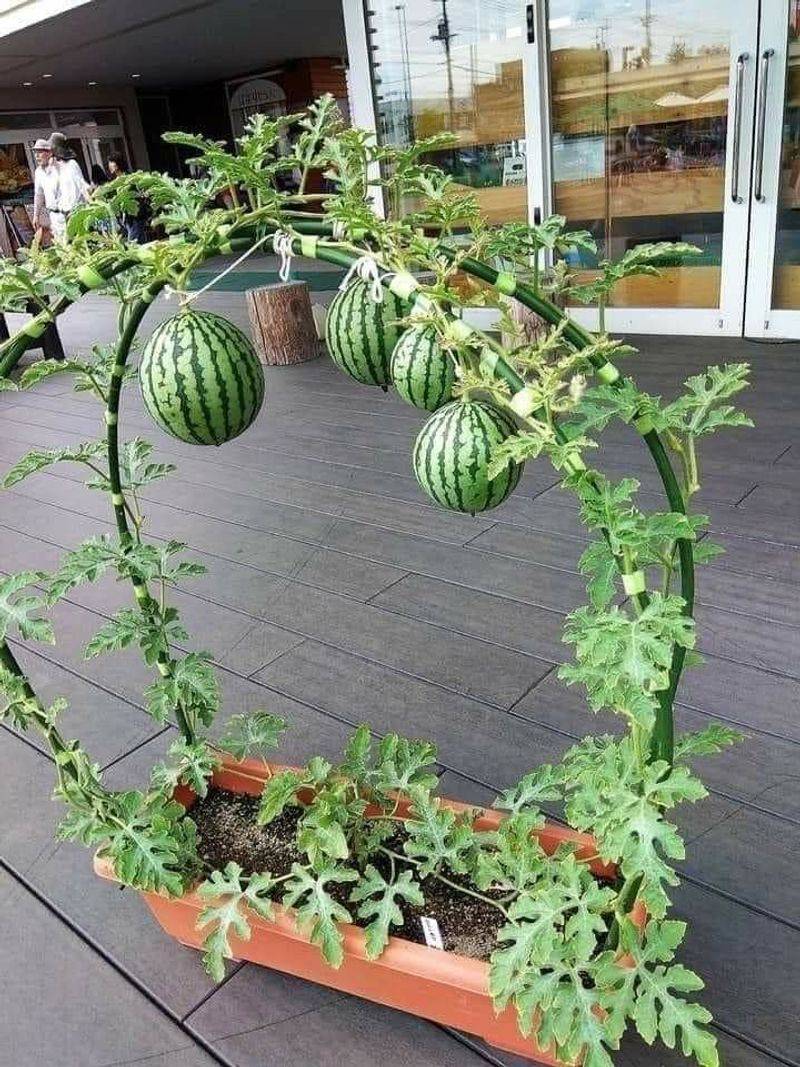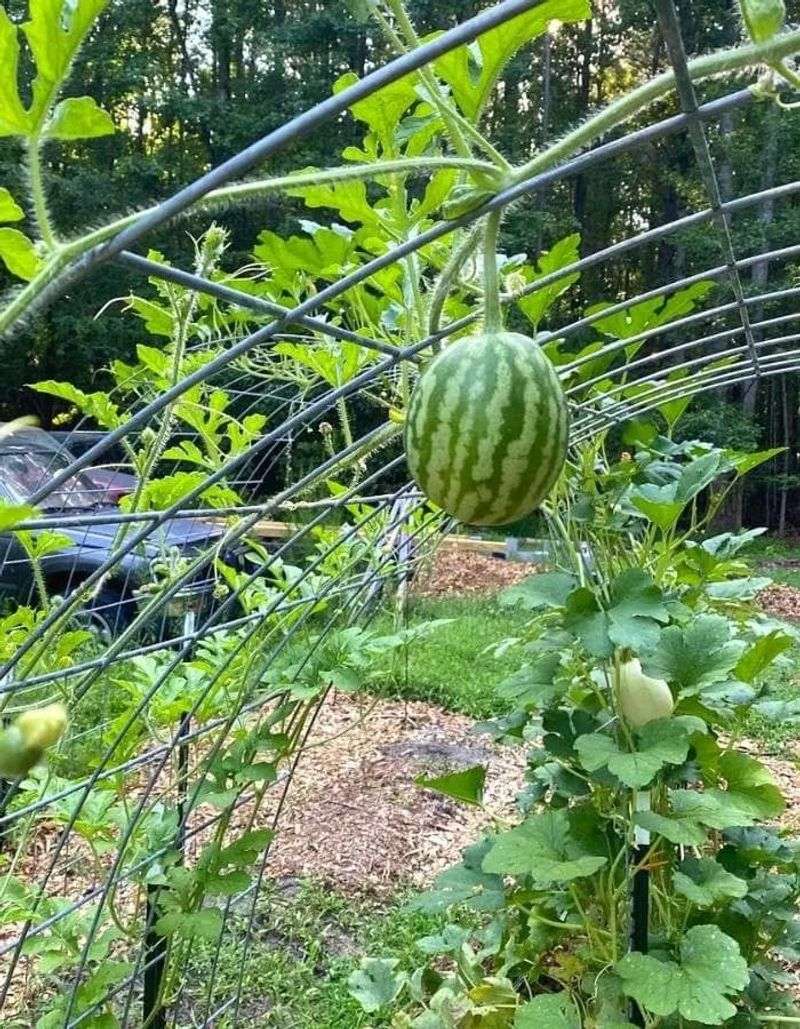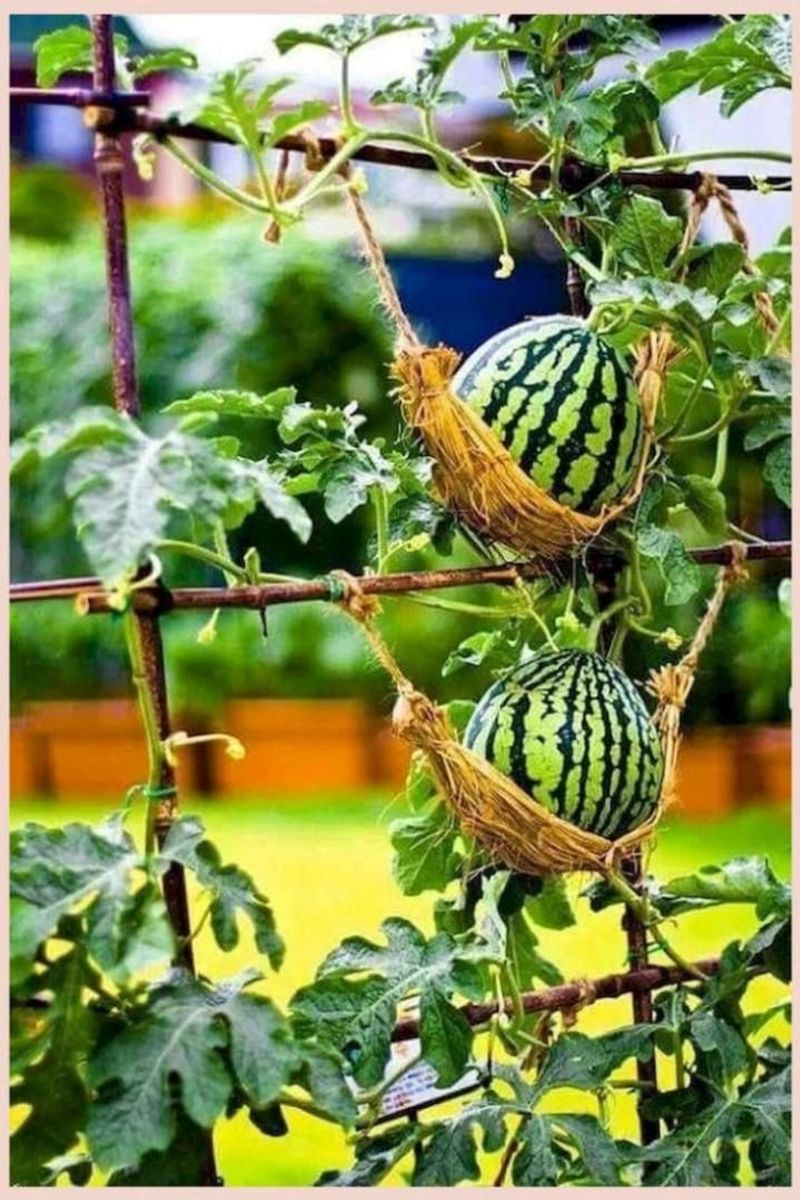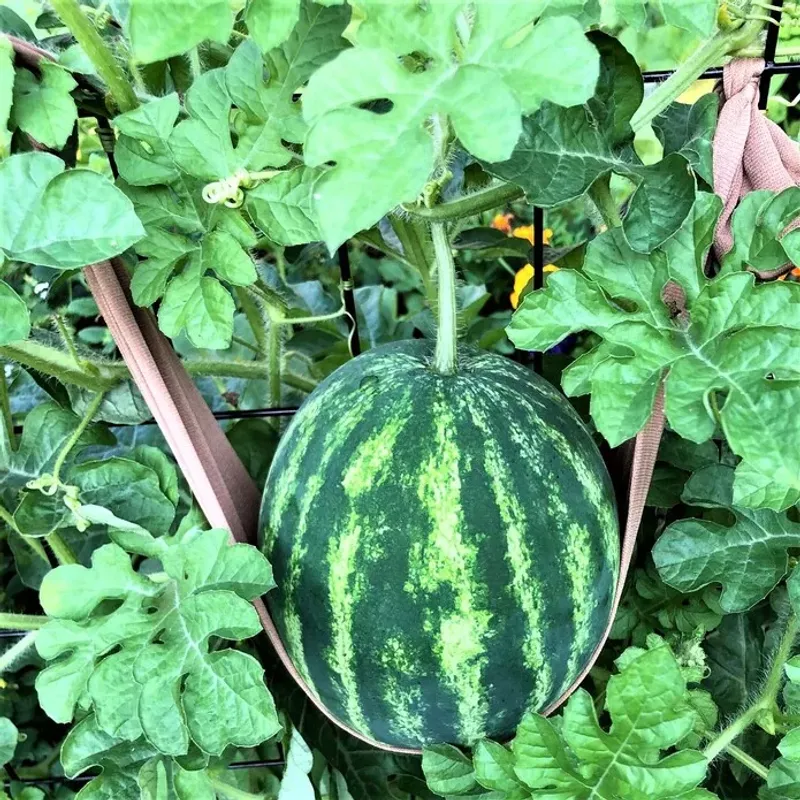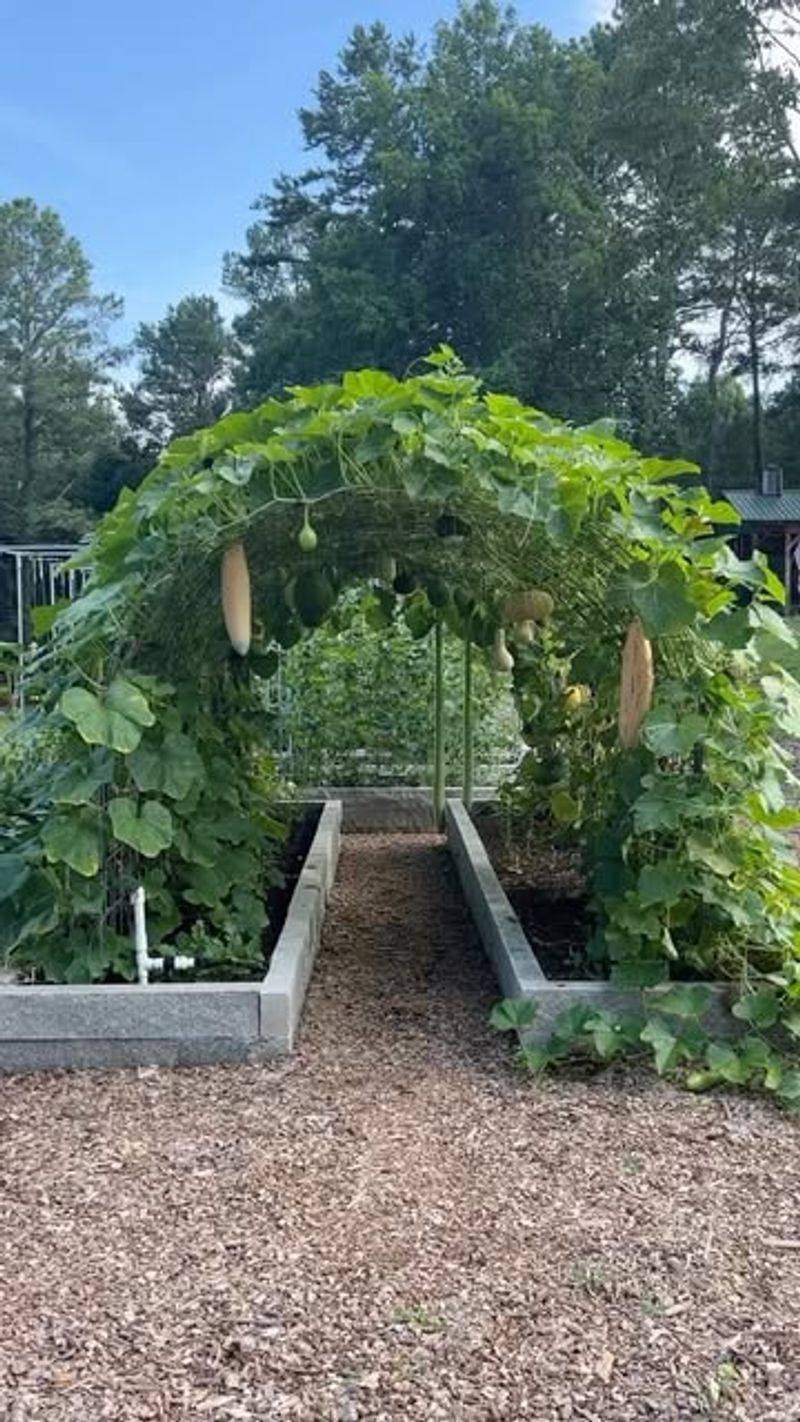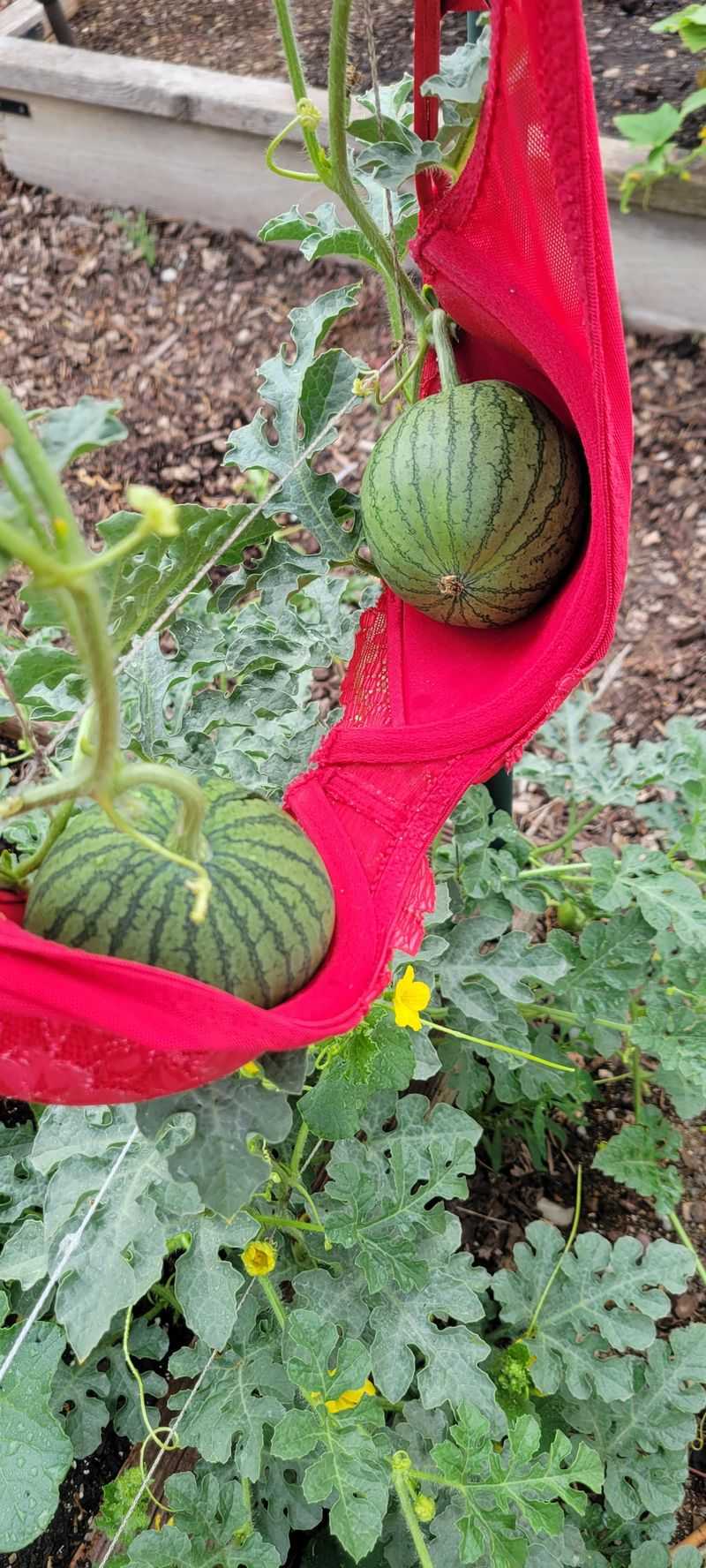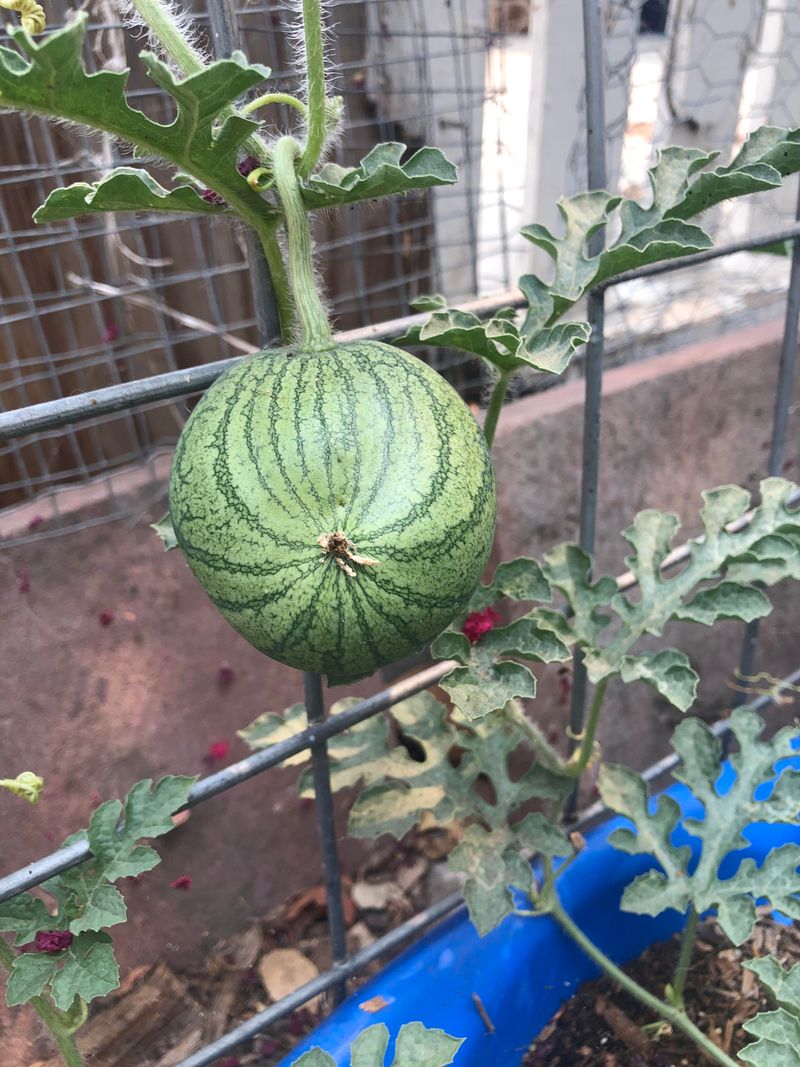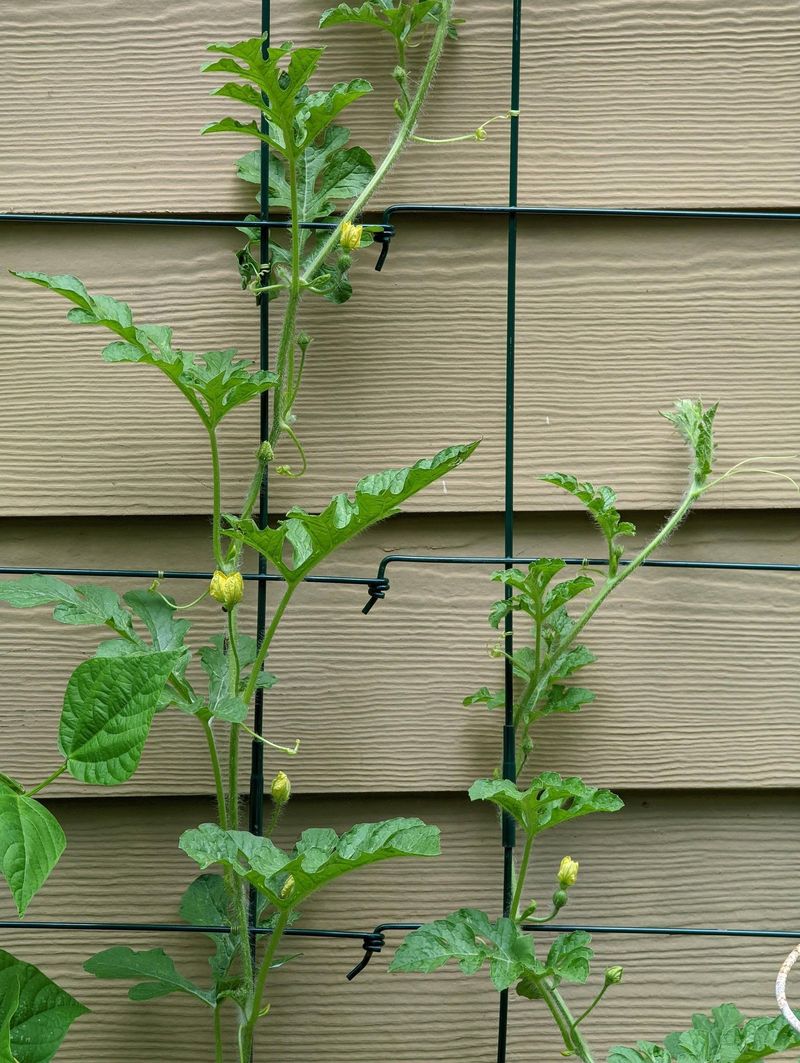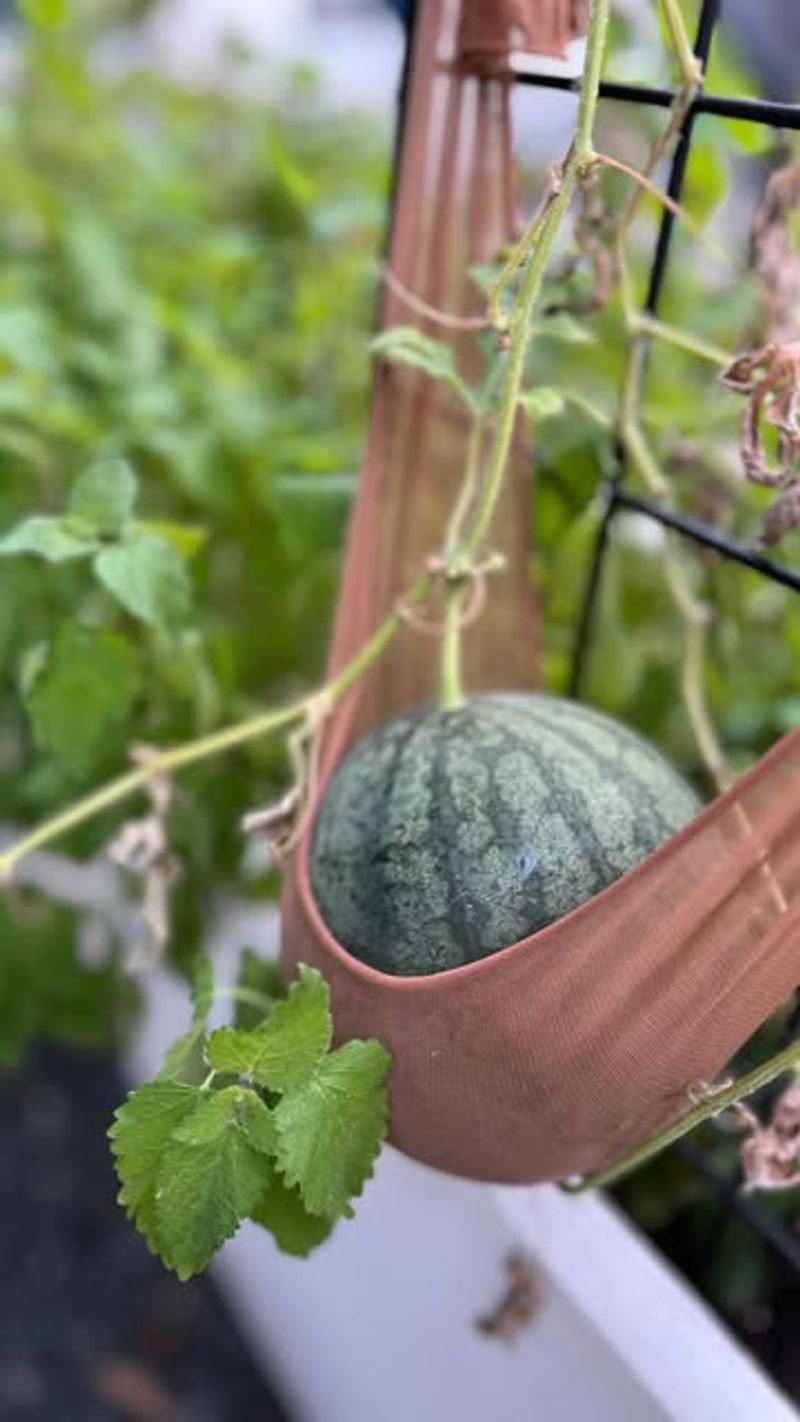Watermelons usually take up a ton of space, but they don’t have to. Growing them vertically is a smart, space-saving trick that’s perfect for smaller gardens—or anyone who wants more fruit with less fuss.
It’s easier than it sounds, and the rewards are totally worth it. From fewer pests to prettier vines, here’s why going up is the way to grow.
1. Save Precious Garden Space
Watermelon vines typically spread 10-20 feet in all directions when grown traditionally. Going vertical frees up to 80% of that ground space for other plants or activities!
Your compact garden suddenly becomes a productive powerhouse when those sprawling vines reach for the sky instead of crawling across your garden beds. Many urban gardeners have doubled their overall harvest by implementing this space-saving technique.
2. Cleaner, Less Diseased Fruits
Elevated melons stay off the damp ground where rot-causing fungi and bacteria thrive. The improved air circulation around hanging fruits dramatically reduces common watermelon diseases.
Garden pests like slugs and snails can’t easily reach your prized watermelons when they’re dangling safely above. Many vertical growers report nearly spotless rinds compared to their ground-grown counterparts, making for prettier presentation at picnics too!
3. Easier Harvest Without Back Pain
Forget bending, stooping, and searching through tangled vines at ground level! Vertical growing positions your watermelons at waist or chest height for simple inspection and harvesting.
Your back will thank you when harvest time arrives. Many older gardeners who had given up growing watermelons have returned to this favorite crop thanks to the ergonomic advantages of vertical systems. Plus, you’ll spot ripe fruits more easily when they’re displayed at eye level.
4. Perfect Shape Development
Gravity works magic on vertically grown watermelons! The consistent downward pull helps melons develop more uniform, symmetrical shapes than their ground-grown counterparts that often have flat sides.
Supported by slings or hammocks, hanging watermelons receive even pressure on all sides. Commercial growers in Japan have used this technique for decades to produce perfectly round, premium watermelons that command top prices. Your homegrown vertical melons will impress neighbors with their market-perfect appearance.
5. Enhanced Sweetness Through Better Sun Exposure
Sunshine equals sweetness in watermelons! Vertical growing exposes more of the plant’s leaves to direct sunlight, boosting photosynthesis and sugar production.
The increased leaf exposure can raise the Brix (sugar content) measurements in your melons by 1-2 points. Many vertical growers report noticeably sweeter fruits compared to ground-grown melons from the same seed packet. Your family will definitely taste the difference in these sun-kissed treats!
6. Extended Growing Season Possibilities
Vertical growing warms up faster in spring and retains heat better in fall. This temperature advantage can add weeks to your growing season at both ends!
The improved air circulation reduces fungal issues during cool, damp weather. Northern gardeners especially benefit from these micro-climate effects. Many zone 5 gardeners successfully grow varieties previously considered suitable only for zones 6-7 by using vertical systems against south-facing walls.
7. Reduced Pest Problems Naturally
Elevated watermelons face fewer attacks from ground-dwelling pests like cucumber beetles, which spread bacterial wilt. The height advantage creates a natural barrier against many common garden troublemakers.
Beneficial insects find it easier to patrol vertical vines for aphids and other pests. This natural balance often eliminates the need for pesticides. Many vertical growers report using zero chemical controls while still harvesting perfect melons, making this method ideal for organic gardeners.
8. Water Conservation Benefits
Vertical growing slashes water usage by up to 70% compared to traditional methods. The focused root zone means you water only where needed, not the entire sprawling area a ground vine would cover.
Evaporation decreases significantly when less soil surface is exposed. Drip irrigation works perfectly with vertical systems, delivering moisture directly to roots. During recent drought years, vertical watermelon growers maintained healthy harvests while using just a fraction of the water required by traditional methods.
9. Stunning Visual Impact In Gardens
Watermelon vines create a gorgeous living screen when trained vertically! The large, lobed leaves cast beautiful shadows, while the yellow flowers attract beneficial pollinators to your garden.
Later in the season, the hanging fruits become conversation starters. Many gardeners use decorative trellises to make their vertical watermelon displays true garden focal points. Children especially love watching the “watermelon wall” develop throughout summer, making this a perfect family gardening project.
10. Higher Yields In Limited Space
Vertical growing can boost yields by 20-30% compared to traditional methods! The improved light exposure and air circulation lead to healthier plants that produce more female flowers (which become fruits).
Disease reduction means more energy goes into fruit production rather than fighting off infections. Urban gardeners regularly harvest 8-12 watermelons from a single vertical vine in just 4 square feet of ground space. That’s productivity that would require at least 25 square feet with conventional growing methods!
11. Use Sturdy Trellises For Support
Not all trellises can handle watermelon weight! Choose or build structures using 2×4 lumber, metal pipes, or reinforced cattle panels that won’t collapse under heavy fruits.
Angle your trellis slightly (about 15 degrees) for better weight distribution. The slight lean prevents fruits from hanging directly below attachment points, reducing strain. Many successful growers anchor their trellises to walls or posts for additional stability during summer storms.
12. Create Support Slings For Growing Fruits
Fashion hammock-like supports from old t-shirts, pantyhose, or mesh produce bags once fruits reach softball size. These flexible slings expand as melons grow while providing crucial support.
Tie each sling securely to trellis crossbars, not the vine itself. The fabric cradles prevent stem breakage that would end fruit development. Some creative gardeners use colorful fabric scraps to make these slings decorative as well as functional, adding visual interest to their vertical displays.
13. Choose Appropriate Varieties For Vertical Growing
Not all watermelons are suited for climbing! Select smaller varieties (under 10 pounds) like ‘Sugar Baby’, ‘Blacktail Mountain’, or ‘Petite Yellow’ for vertical success.
These compact varieties produce manageable fruits that won’t break vines or supports. Ice-box types (personal-sized melons) perform exceptionally well in vertical systems. Their shorter maturation times also benefit northern gardeners with limited growing seasons, often ripening 2-3 weeks earlier than larger varieties.
14. Train Vines Early And Consistently
Begin training young vines when they’re just 12 inches long. Gently weave main stems through trellis openings or secure with soft plant ties every 6-8 inches.
Check twice weekly for wayward growth and redirect it. Young vines are surprisingly cooperative about climbing if guided regularly. The main stem should always be vertical, while side branches can be trained diagonally for better spacing and light exposure.
15. Provide Adequate Water And Nutrients
Vertical watermelons need consistent moisture since their root zones are more concentrated. Install drip irrigation on timers for best results, delivering about 1-2 gallons per plant daily during fruit development.
Feed plants with potassium-rich organic fertilizers once fruits set. This mineral strengthens stems and improves sweetness. Many successful growers apply weekly compost tea through the irrigation system, providing micronutrients that enhance both growth and flavor in the developing melons.

